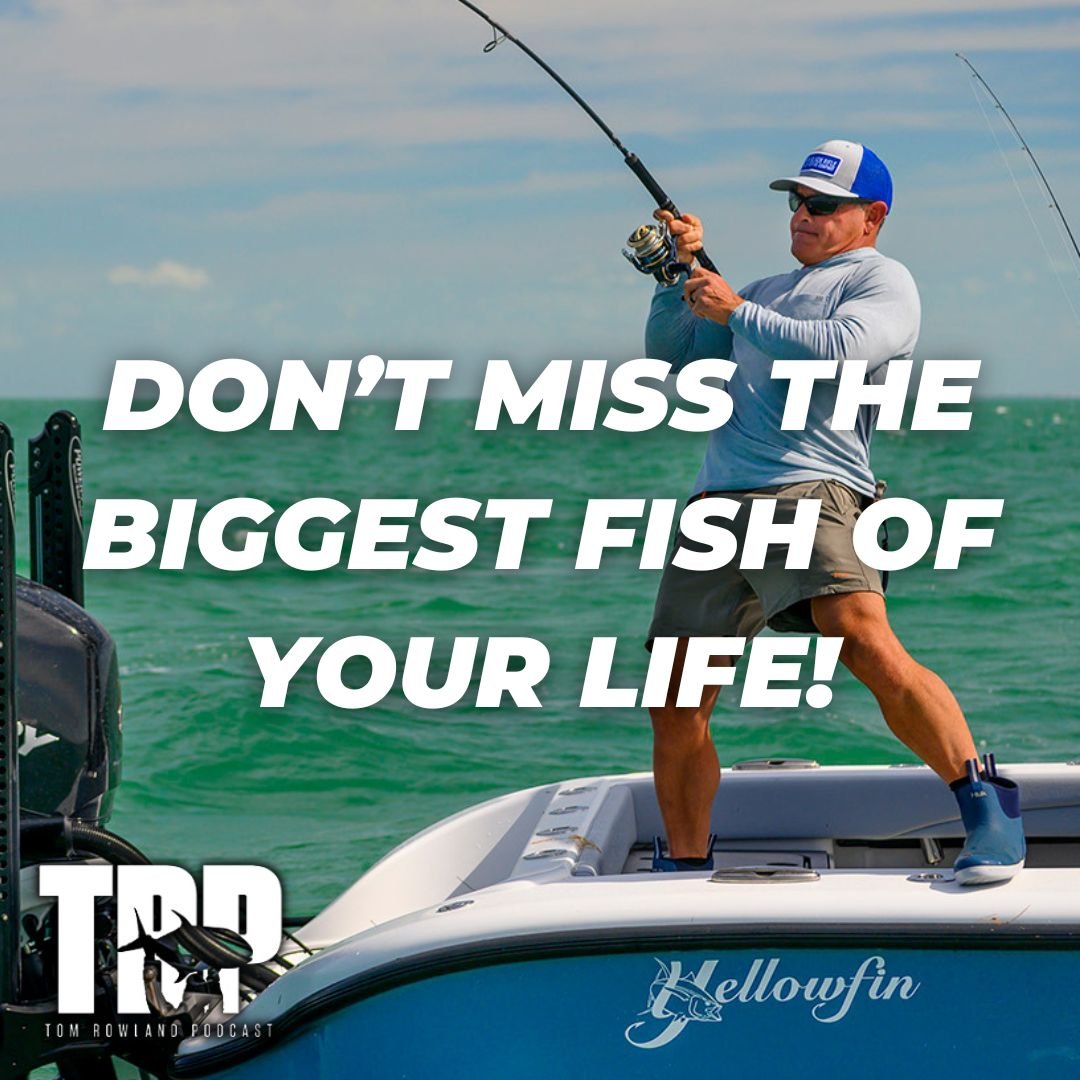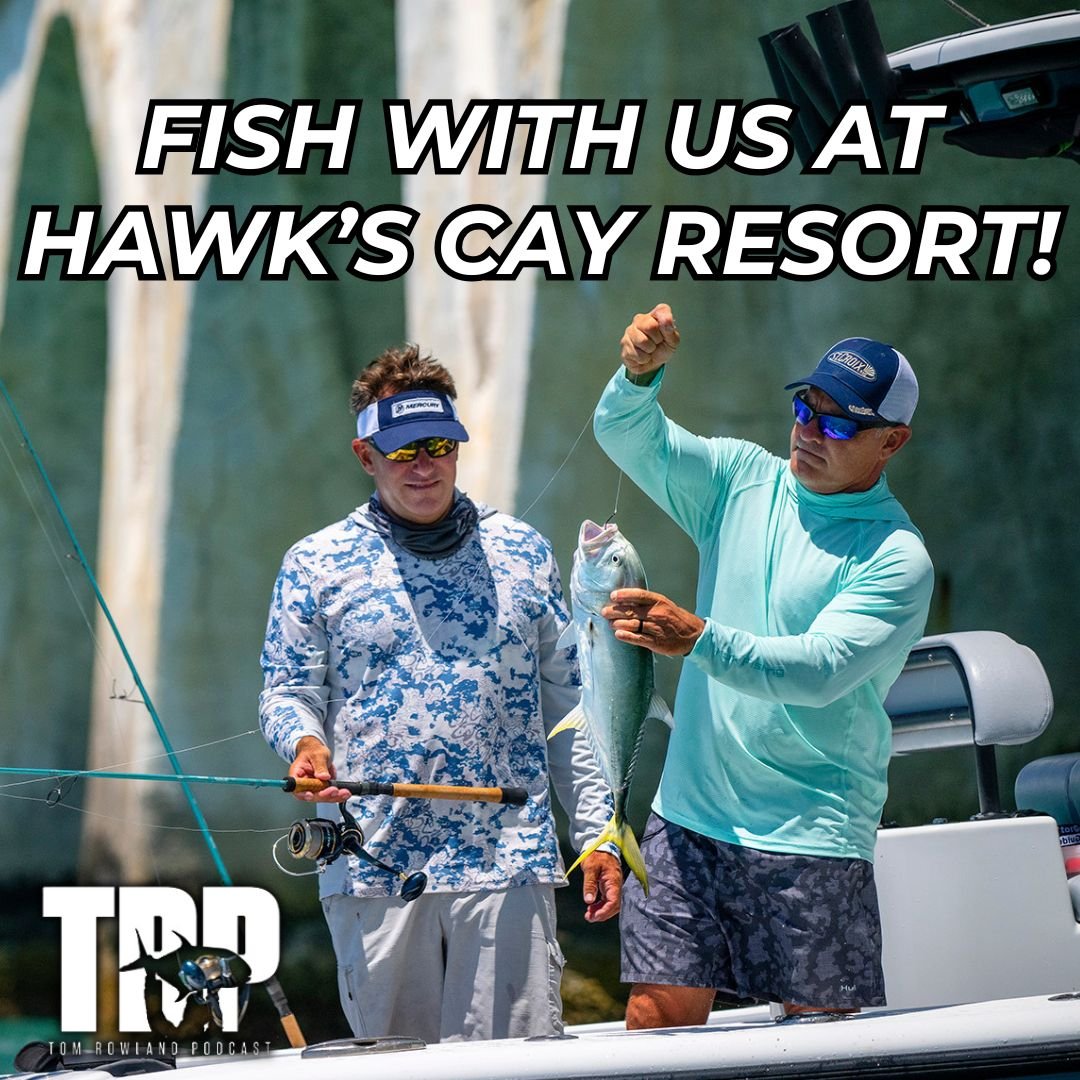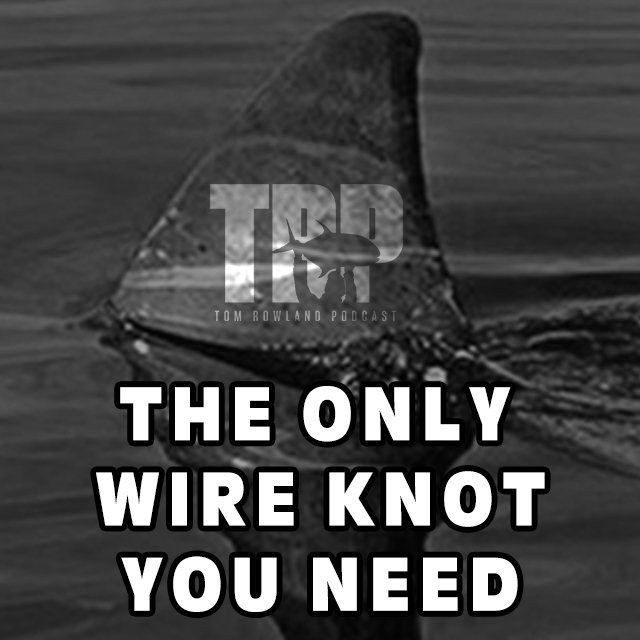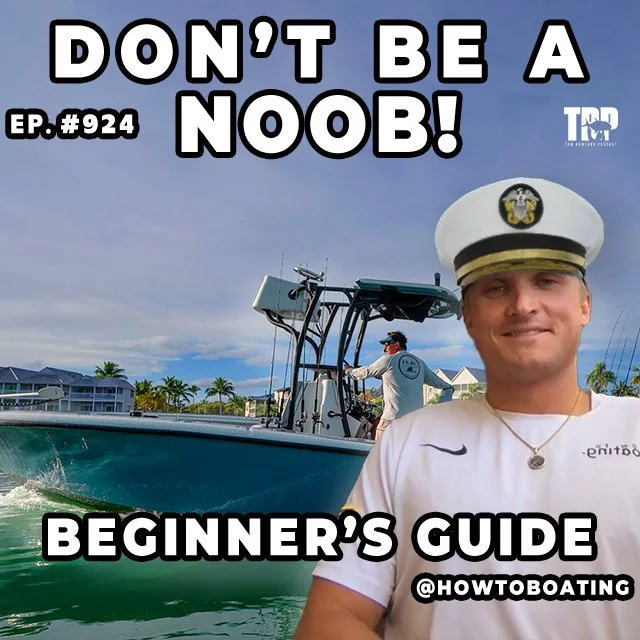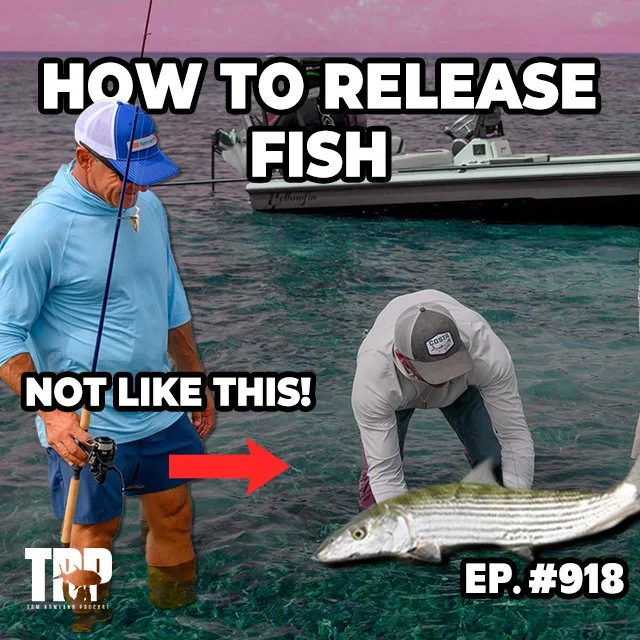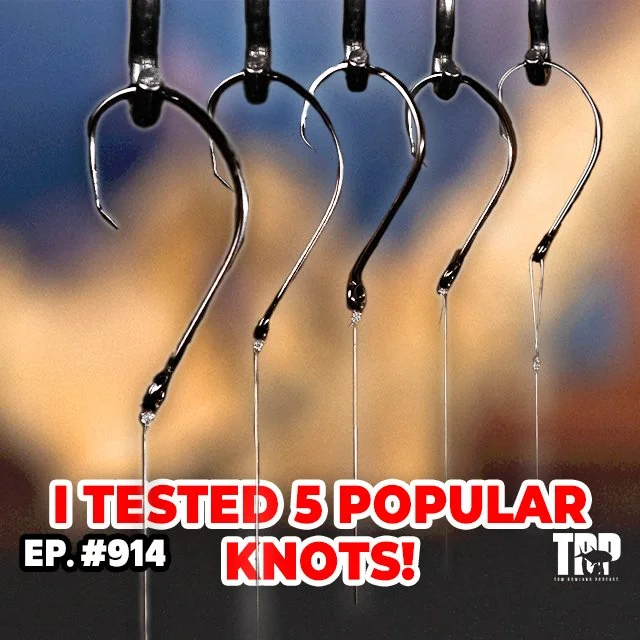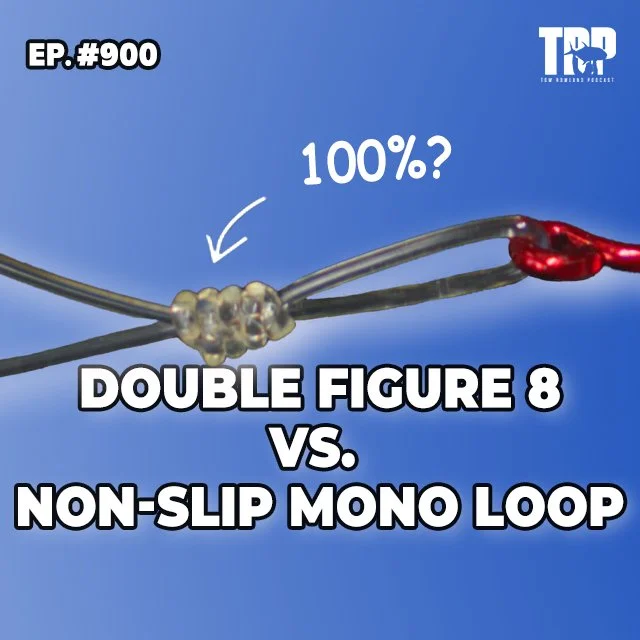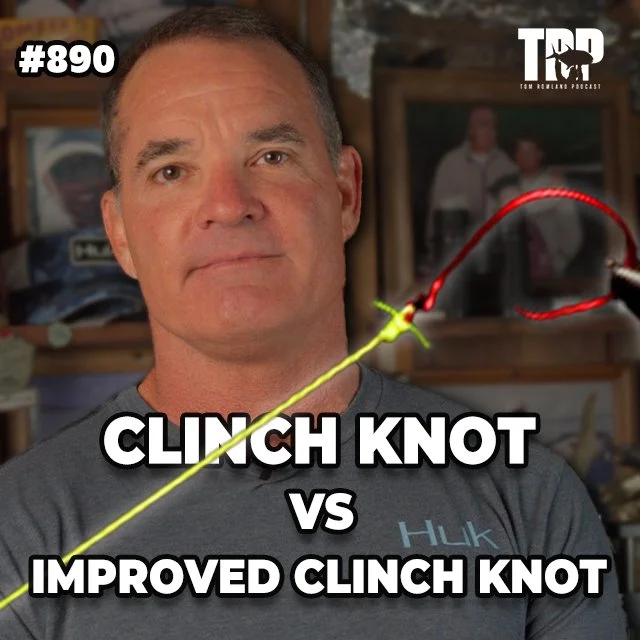Permit Fishing 101 - How To Catch A Permit On Fly Featuring Capt Brandon Cyr and Capt Tom Rowland
TOM ROWLAND PODCAST
LISTEN NOW ON ITUNES, PODCASTS, SOUNDCLOUD, SPOTIFY, OR STITCHER!
“Permit is by far my favorite fish.”
PODCAST SYNOPSIS
Fourth-generation Conch and Key West Flats Guide Brandon Cyr joins me today to discuss everything about how to catch a permit on a fly rod. This is one you do not want to miss if you ever aspire to catch this incredible fish. While we agree on most of these tactics, we do have some differences. Here are some of my tips for catching permit on fly:
Flyfishing For Permit
Flyfishing for permit is difficult not because the fish are terribly difficult to catch rather that our flies and techniques do not accurately represent what they want to eat. Permit looks at a dead crab the same as they look at a fly. The profile is interesting but not really what they had in mind. Flies need to have an action resembling the real crabs and until they do, it is my opinion that they will remain exceptionally difficult to catch on fly.
Currently, in order to get a permit to eat the fly, anglers need to master several casts and need to be prepared to deliver these casts to the target under a wide variety of situations. The best permit flyfishermen become very comfortable with a 20-25 mph wind at any angle and are able to get the fly to the target.
The most productive flies currently being tied only resemble a live crab when the lead eyes are dragging the fly to the bottom. For this reason, anglers need to cast the fly directly in front of the permit in order for the fish to see the fly escaping and trigger the eating response. Fly tiers are constantly trying new styles and ideas. The Hover Crab by my friend Simon Becker is a crab pattern that has caught tons of fish and is a very interesting approach. This fly floats over the top of the grass rather than digging in like a traditional Merkin. Guides and tiers both will continue playing with ideas and coming up with better and better patterns. I look forward to the results.
Fly Rods and reels
A 9 foot 10 weight rod matched to a floating weight forward line is the standard outfit. Leader length varies with conditions but a 9 to 12-foot leader tapered to 12-pound test in standard.
The reel needs to be capable of holding 200 yards of backing plus the WF10F line. Permit do fight hard but will not stress the fly tackle like a tarpon, tuna or sailfish. A quality reel designed for saltwater use should be fine as long as it contains a disc drag made of cork or modern materials.
Specialty lines have been created for permit fishing and do work well. These include severe weight-forward lines to aid the fly in turnover under windy conditions. Anglers should search out all lines and go with the ones they cast the very best because anything less than that is not good enough to have continuous success with this fish.
Casting to Permit
Casting a long way with a fly is definitely important for success in flyfishing for Permit, however, I would rather have an angler who can cast a heavy Merkin 50 feet quickly and accurately than a guy who can throw 100 feet but does so with tons of false casts. I suggest to all my anglers that they practice as we will fish. Start in the Ready Position and work out to 50 feet with only 1-2 false casts and hit a target. This is an effective practice and will help greatly. Strip the line back in, get in the ready position again and repeat.
To make this even more effective, have 2 targets at different distances. Start at the ready position and throw to one, strip in and make one false cast and go to the second one. Avoid the temptation to stand there and wave around 50 feet of line in the air with never-ending false casts or to simply try to throw the line as far as you can.
A right-hand wind (for right-hand casters) is part of the sport. Permit fishing takes place on windy flats and more than 60% of the time it happens to be on your casting shoulder. You have to learn how to deliver the fly with a heavy wind on your casting shoulder or you will experience frustration and sense extreme frustration coming from the back of the boat.
There are really two effective ways to be successful in these conditions. The first is to “Walk the line out” and the second is to deliver the fly with the backcast.
Walking the line out
With a heavy wind on your right shoulder, a nice tight loop and 2-3 false casts will bury a big heavy Merkin deep into your face. We do not want to look like the flyfishing calendar where the guy is throwing a loop that will fit through a screen door for this cast. In order to deliver the fly, we need a giant, wide-open loop that will keep the fly 30 feet over your head. I am not as concerned with getting hit as I am of missing the shot. When a fly buries deep into your face and a Permit is tailing in front of you, you have missed your chance and that could have been the best or the only one all day.
Practice throwing a wide-open loop. To do this, simply stop as you normally would on your cast but then open the stroke of the rod to open the loop. Stand on dry ground and practice going from a tight loop to a wide loop. With heavy flies or wind-resistant flies, this is the best way to get them to the fish without hitting yourself or throwing wind knots.
Once you have developed the wide loop, you can then learn to walk the line to the fish. Make a roll cast and let the fly and line land on the water. Drop the rod tip to the water and then use a water haul to pick up the line and deliver a big wide loop as far as you can with one backcast. Let the fly and line hit the water again. You should have about 30 feet of line outside the tip now. Pick up for a final time with the water haul and with only a single backcast, deliver another wide loop to the fish.
This is the best way to get the fly to the fish with a big right-hand wind. Novice casters can learn how to do it rather quickly and use 2 casts to get the fly to 40-50 feet. More experienced casters can use 3 casts to get the fly to 50-70 feet accurately and without any facial injury. The best can cast 80-100 feet with 2 casts with this method.
Back Cast
The second method is to use a back cast to deliver the fly. This is not a backcast like in trout fishing where your back is turned to the fish. Rather, in this technique, you always keep your eyes on the fish and your toes pointed toward the fish. The only thing “Back” about this cast is the position of your hand and arm.
Your back cast is your most powerful cast anyway. Learning how to really rip it into the wind will really help you catch more fish. Once, I went to Christmas Island and experienced a week of right-hand wind. Every fish but 1 that I caught the entire week was on a backcast delivery. Make sure you get this one down.
The power back cast is a technique that deserves its own book, rather than just a paragraph here. We will definitely come back to this again, but in the meantime, give this delivery a try.
Hard roll casts to short fish
In really windy conditions, we often see fishtailing or feeding only 20-30 feet from the boat. Many anglers make a big mistake by trying to false cast before delivery. There is no need to do this. Simply rip a hard roll cast right to the fish. Practice this often and you can get to where you can hit a target pretty accurately at 30 feet with one downward stroke from the ready position.
Leaders and Construction
Leaders are an important part of Permit fishing. It is crucial to be able to turn over the fly every time. The leader also has to be strong and invisible, but none of that really matters if the fly doesn't turn over and get to the fish. I use Lefty Kreh’s famously simple 50% rule on leader creation for a starting point and then tailor to the weather conditions. For a 9 foot leader, it is simply:
4 feet of butt section
2 feet of next taper
1 foot of next taper
2 feet of tippet
This is so simple but it works so well. It is called the 50% leader because we simply start with 4 feet, take half that distance, half again, then double for the tippet. If you want a longer leader, start with a longer butt section. If you want the fly to land a little easier, simply add another foot of tippet.
Make sure that the leader turns over every time and make small adjustments to get the presentation you are looking for
Materials
I have gone to a 100% fluorocarbon leader for most of my permit fishing. There is a new trend to try to catch fish on dry flies. When I am doing this, I use a 100% monofilament leader since it floats so much higher than Fluoro. This is the only time I am using mono leaders any more.
Where to put the fly
It is important to hit the fish on the head with the fly. I have caught and seen fish caught with big leads, but 95% of the permit I have caught on fly or my customers have caught on fly have been when the fly landed very close to the fish. It seems to be best to hit them right in the head, however, due to inaccurate casting, wind or nervousness, many fish are hit in the tail. I will have to say that lots of those fish have wheeled around with enthusiasm and eaten the fly aggressively. Hitting them in the tail may not be entirely bad and sometimes can even be a strategy. If you don't get a reaction from a headshot, try a tail shot.
The Permit is my absolute favorite fish in the World. I have been extremely lucky to have spent so much time in Key West and the Florida Keys where the Permit fishing is so good. If you have considered Permit for your next trip or you are deeply overcome with passion, this fish is a worthy adversary.
This podcast is brought to you by Waypoint. Produced by Tom Rowland and Brock Rustand. Audio editing by Brock Rustand. If you have any questions, email podcast@saltwaterexperienece.com
See you on the water,
Tom Rowland
This episode is brought to you by these great sponsors:
Barracuda Tackle - Makers of the best cast nets on the market BarracudaTackle.com
Empire Boat Covers - Protect All The Things You Love - empirecovers.com/TRP
Boat Hammock Stands - Comfortable Boating Awaits - boathammockstand.com
This episode has been brought to you by Waypoint TV. Waypoint is the ultimate outdoor network featuring streaming of full-length fishing and hunting television shows, short films and instructional content, a social media network, Podcast Network. Waypoint is available on Roku, Samsung Smart TV, Amazon Fire TV, Apple TV, Chromecast, Android TV, IoS devices, Android Devices and at www.waypointtv.com all for FREE! Join the Waypoint Army by following them on Instagram at the following accounts
@waypointtv @waypointfish @waypointsalt @waypointboating @waypointhunt @waypointoutdoorcollective
Find over 150 full episodes of Saltwater Experience on Waypoint
You can follow Tom Rowland on Instagram @tom_rowland and find all episodes and show notes at
Learn more about Tom's Television shows by visiting their websites:
Contact Tom through email: Podcast@saltwaterexperience.com


